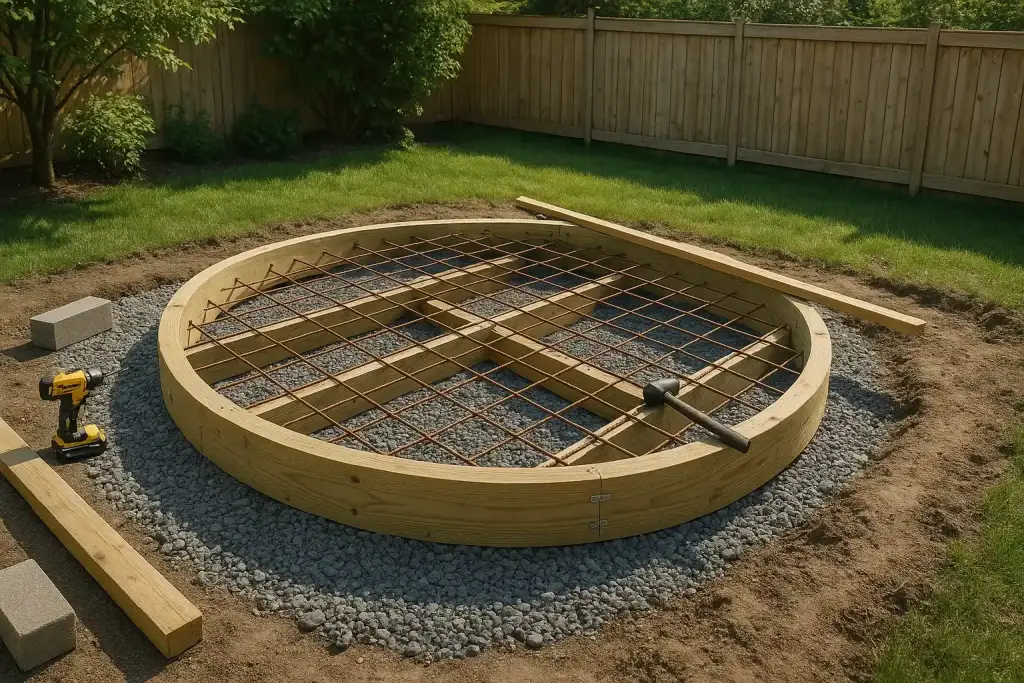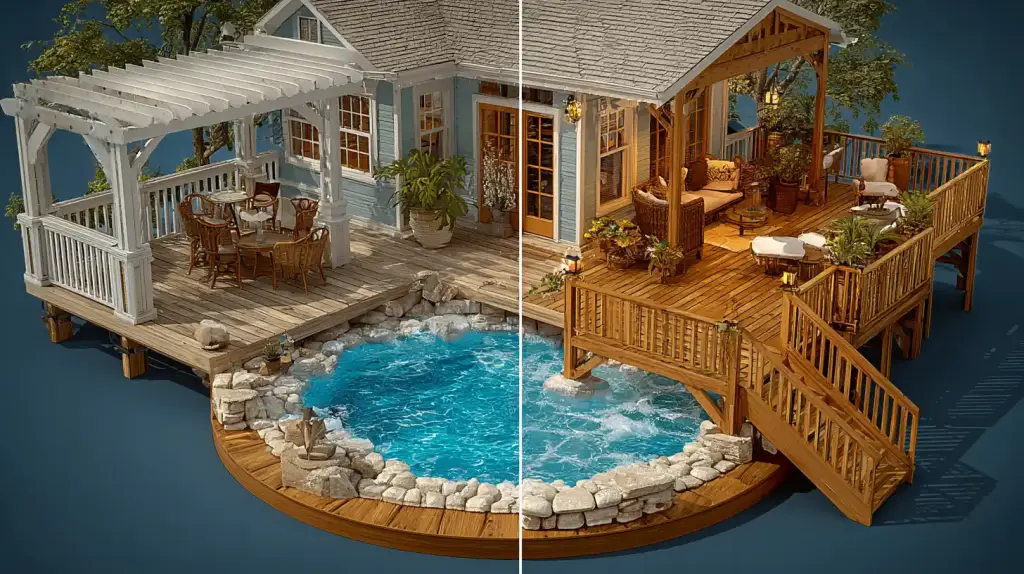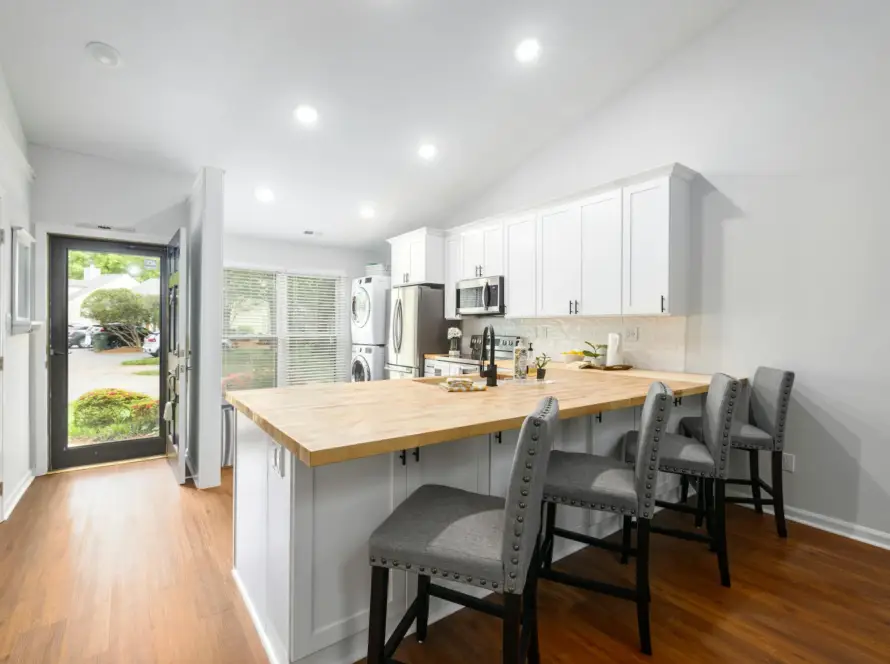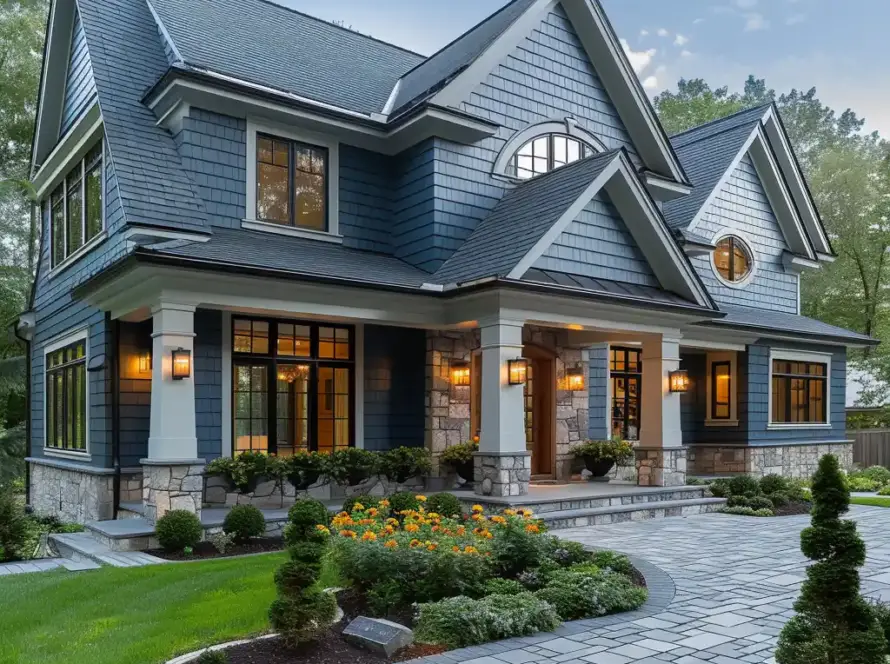A hot tub is the pinnacle of backyard relaxation—but it needs a strong, well-designed deck to support it safely. Whether you’re planning a small 12×12 platform or a luxurious 20×20 outdoor lounge, your costs will vary significantly depending on materials, design, and the size of the hot tub itself.
On average, building a deck for a hot tub costs between $6,000 and $15,000. However, the final price depends on multiple factors, including:
Type of decking material (pressure-treated wood, composite, or hardwood)
- Type of decking material (pressure-treated wood, composite, or hardwood)
- Required structural reinforcements
- Size of the deck
- Hot tub weight (when filled with water and people)
- Site preparation and permitting
How Much Does It Cost to Build a Hot Tub Deck?
The average hot tub deck—designed to hold 3–5 people—typically costs around $8,000–$12,000. Reinforcement is critical, as a filled spa can weigh over 4,000 pounds. Decks often require double joists, concrete footings, and specialized framing, which all increase the budget.
Breakdown of costs:
- Reinforcement framing: $500–$2,000 extra
- Materials: $20–$45 per square foot
- Labor: $25–$50 per square foot


Can You Build a Deck for $5000?
Yes—but with limitations. A $5,000 budget can cover a small 10×10 platform using pressure-treated wood, suitable for a lightweight two-person hot tub. You’ll need to:
- Limit custom features (no built-in seating or privacy walls)
- DIY parts of the project
- Ensure proper weight support with simpler reinforcement strategies
If your spa is larger or you want a more aesthetic design, you’ll likely need a bigger budget.
GET THE SERVICE
Need Expert Advice?
How Do I Tell If My Deck Can Support a Hot Tub?
Before installing a hot tub on an existing deck, consult a structural engineer or licensed contractor. A typical deck designed for foot traffic handles about 40 pounds per square foot, while hot tubs may require support for 100–120 pounds per square foot.
Signs you need reinforcement:
- Visible sagging or flexing
- Deck was not built with hot tub use in mind
- You’re unsure about the original deck specs
A professional can calculate load requirements and recommend upgrades.
How Much Should a 20×20 Deck Cost?
A 20×20 deck provides ample space for a spa and outdoor furniture. Expect to pay:
- Pressure-treated wood: $8,000–$12,000
- Composite decking: $12,000–$18,000
- Premium hardwood (e.g., Ipe): $15,000–$25,000+
This size requires substantial framing and potentially more footings to support a hot tub and surrounding usage.
How Much Does a 12×12 Deck Cost?
Smaller 12×12 decks are popular for standalone hot tubs with minimal furniture. Here’s what to expect:
- Budget builds (wood): $3,000–$6,000
- Composite upgrades: $5,500–$9,000
These decks still require structural support upgrades but may be more DIY-friendly.
Is It Cheaper to Build or Buy a Hot Tub Deck?
Prefab hot tub surrounds cost between $1,000–$3,500 and offer a quick solution but lack durability and custom integration. A custom-built deck is more expensive but:
- Increases home value
- Improves backyard aesthetics
- Can be tailored to your lifestyle and yard space
Over the long term, building your own deck is often the better investment.
Final Thoughts
A hot tub deck is more than just a platform—it’s a lifestyle upgrade. By understanding cost breakdowns and structural needs, you’ll be able to build a safe, beautiful deck that lasts for years. If you’re unsure where to start, our team at HomeAdvisor USA can connect you with licensed, trusted deck builders in your area.



2 Comments
buildwise_jake
Great guide! I especially appreciated the weight load calculations and safety considerations. I was wondering — do you have any recommendations on choosing between a freestanding vs. attached deck based on soil type or climate conditions? Also, were features like built-in stone surrounds or spa jets factored into your cost estimates? It would be helpful to see real-world project examples with total costs included.
John S.
Thanks so much for the kind words — we’re glad you found the guide helpful!
To your question:
Freestanding decks are often a better choice for areas with unstable or expansive soil, since they allow for more flexible footing placement and reduce stress on your home’s foundation. They also work well in high-moisture climates where drainage is a concern.
Attached decks, on the other hand, can be more cost-effective and are ideal when the soil is stable and the connection point (usually the house’s rim joist) is structurally sound and accessible.
As for the cost estimates, the baseline figures include standard framing and load requirements but do not account for upgrades like built-in stone surrounds, spa jets, lighting, or plumbing — all of which can significantly increase the total.
We agree — including real project breakdowns would be really helpful. We’re currently gathering case studies to add to the post in an upcoming update. Stay tuned!